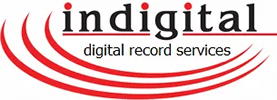The idea of going paperless in your office likely appeals to many, but it’s also very hard to actually implement. To have a successful transition, you need to start long before you actually start scanning and digitizing your files. This is along-term and fundamental change, and it deserves along term approach.
What kind of preparation work can you do to prepare your office for eventually going paperless? Here are five steps to take.
1. Add Dual Monitors
Often, employees print documents in order to have them handy as a reference for things like data entry or cross-confirmation. Help them use digital versions instead by installing wider monitors instead of old-fashioned square ones. Wider screens allow people to bring up two or more documents on the screen and easily switch between them.
In areas of high data entry, add a second monitor to work spaces. Second monitors can be keyed into the first one so that they act as one very widescreen. Workers don’t even have to switch between them. Be sure, though, that you show all employees how to make the most of multiple screen options
2. Limit Printing
Many office workers print items – like email messages, invoices, reports, and forms – out of habit and convenience. But if you takeaway that convenience, you may find that many people will limit how much they print and end up saving paper.
A simple step is to remove printers from convenient locations like desks and shared office spaces. Move printers to larger group locations where people have to get up from their desks or leave their offices to print something. As an alternative, show employees how to save files in a personal or departmental directory with simple and searchable naming structures.
3. Ditch the Fax Machine
Do you still operate some activities using an old school fax machine? If at all possible, get rid of all company fax machines and switch to modern options for forms that used to come in by fax. This could include offering email options, creating fillable PDF forms, and using a company web portal for customers and vendors to submit items.
4. Highlight Paper Use
Many people reduce their usage by simply being aware of how much of an item is being used. Help employees become aware of the amount of paper they use. Start a company-wide paper recycling campaign. Make scratch paper from non-confidential recycled paper. Set department goals to reduce paper waste. And train employees on how using less paper can benefit the office and the environment.
Even though your ultimate goal is to use almost no paper, you will likely see more support and involvement if employees start thinking about their paper usage now rather than later.
5. Prepare for Obstacles
Any office that tries to go paperless will face many challenges. The more informed you are ahead of time, the better you can fend these off before they stall your progress.
Work with your accountant, lawyer, and office staff to find legal and regulatory alternatives to keeping paper documents. Meet with a document management service to figure out how to transition different types of files. Revamp common documents to fit a future digital filing system. And design a functional organizing system long before you ask any one to actually use it.
While the transition to all-digital offices takes time and patience, it will be worth the effort. Your business will save money, time, and space. And you’ll be able to continue meeting customer needs for years to come. At Indigital, we can help. Call today to start your journey to a more efficient workplace.

